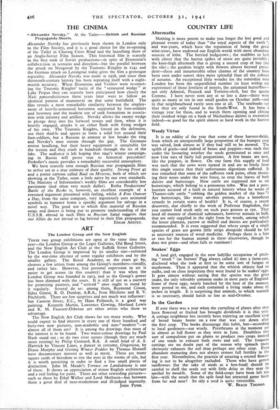Weedy Virtue
It is an oddity of the year that some of these harvest-fields, from which an unexpectedly large proportion of the bumper crop was salved, look almost as if they had still to be mowed. The spilth of grain—and indeed of beans and poppies—was such that under the favouring weather the seeds germinated at once and now tear ears of fairly full proportions. A few beans are now, like the poppies, in flower. On one farm this supply of food was such that the cows were turned in and ate so freely from this single source that their unfortunate digestions suffered. It was remarked that some of the sufferers took pains, often thrust- ing their noses under the wire fence, to crop the leaves of both daisies and buttercups. Now cattle are supposed not to eat buttercups, which belong to a poisonous tribe. Was not a poet- laureate accused of a fault in natural history when he wrote of Thames-side cattle " robbing the golden market of the bees "? Are buttercups, like many another poison, also a beneficent remedy in certain states of health? It is, of course, a recent discovery, due chiefly to the work of Professor Stapledon, that you cannot feed stock only on such pure grasses as rye. They need all manner of chemical substances, however minute in bulk, that are only supplied in the right form by weeds, among which the lesser plantain, yarrow or milfoil and daisies are particularly recommended. It is even suggested that where crops of a single species of grass are grown little strips alongside should be left as necessary sources of weed medicine. Perhaps there is a hint or two for the human animal in these- discoveries, though he does not graze—and often fails to ruminate!






















 Previous page
Previous page